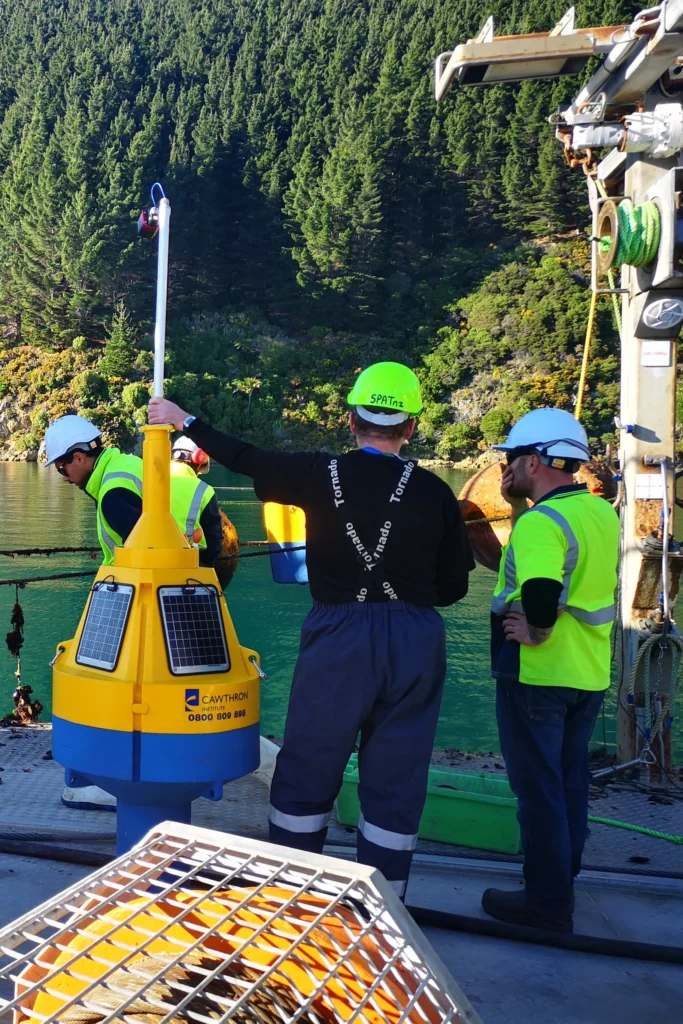Industry Development
Imagining an open ocean aquaculture industry in Aotearoa New Zealand that benefits the environment and people
Building on current operations and creating new opportunities
Establishing an industry that builds on existing strengths and creates entirely new opportunities for entrepreneurs to explore the farming of new, high-value species.
Like any new industry, there is uncertainty about the potential of open ocean aquaculture in Aotearoa New Zealand. Combined with the high level of investment risk, aquaculture companies, investors and new entrants have been hesitant to invest, with tentative growth despite high-levels of interest and enthusiasm.
A core goal of Ngā Punga o te Moana is to strengthen investment confidence for existing aquaculture companies by demonstrating improved productivity, reduced energy and labour costs, and reduced crop loss.

Productivity on a par with inshore aquaculture
Our innovative inshore mussel industry has already demonstrated the ability to lead the world in development of new farming methods.
Enabling and demonstrating shellfish OOA with similar profitability to inshore aquaculture will provide the confidence and ability for shellfish companies to accelerate their expansion into the OOA space. Enabling seaweed OOA will diversify OOA investment options for the existing industry and enable new seaweed-based aquaculture businesses.
We think the principal economic benefits of our programme will be the acceleration of OOA growth and step-change scale-up delivered by:
- Delivering on-farm profitability on a par with inshore shellfish aquaculture (e.g. improved productivity).
- Reduced energy and labour costs.
- Reduced crop loss.
- Enabling diversification into multi-species OOA (shellfish and new seaweed OOA industries).
- Providing increased economic resilience and operational benefits (maintaining production, market, and workforce continuity across seasons).
- Reduced investment risk and increased investor confidence (e.g. reducing capital requirement, enabling smaller investment steps).
- Reducing risk of structural loss.
- Increased profitability fuelling growth and encouraging new companies, investors, and industries (e.g. seaweed).
- Ensuring the prerequisites are met for a sustainable industry (e.g. minimal environmental impact, social licence, broader stakeholder benefits, ensuring safe operations).
- Substantial secondary economic benefit will come from direct employment on farms, in processing facilities, and in support industries including farm installation, equipment manufacture, monitoring technologies, and boat building.

